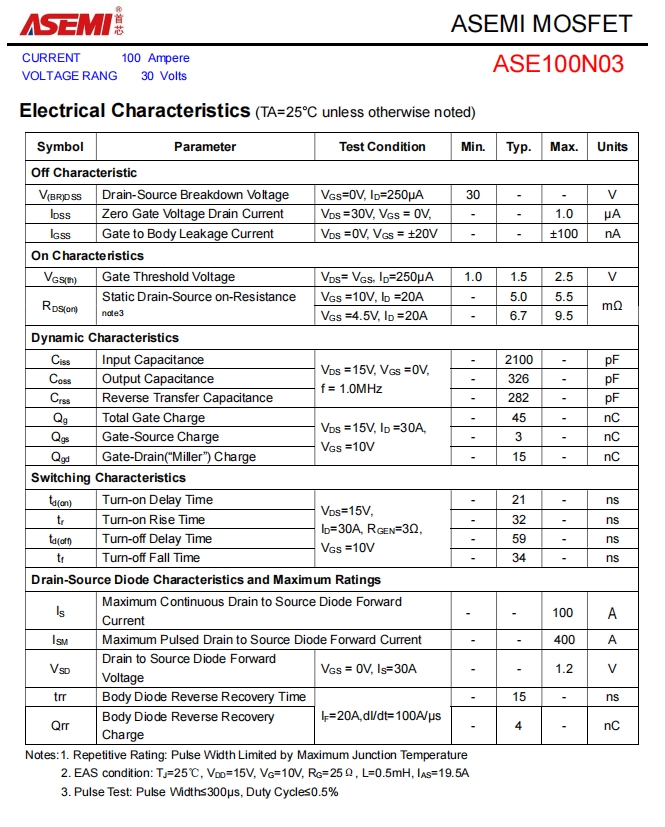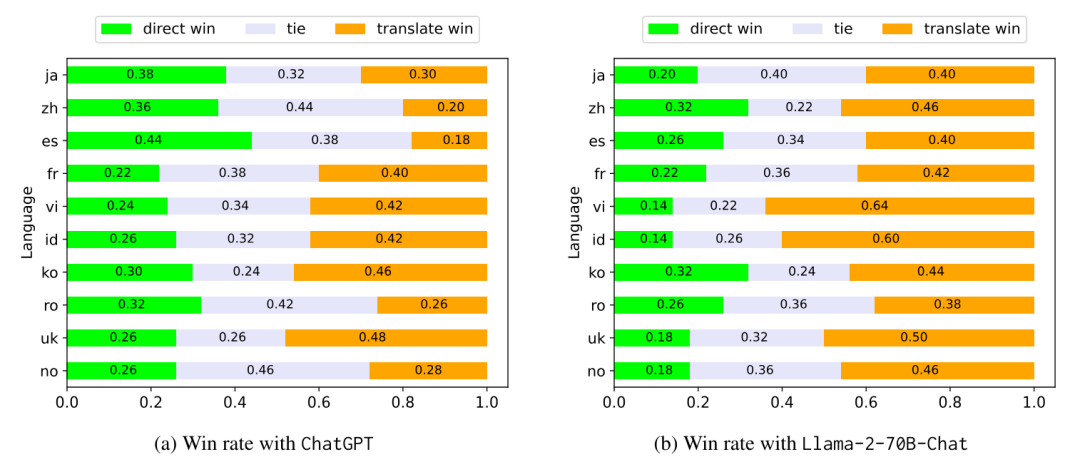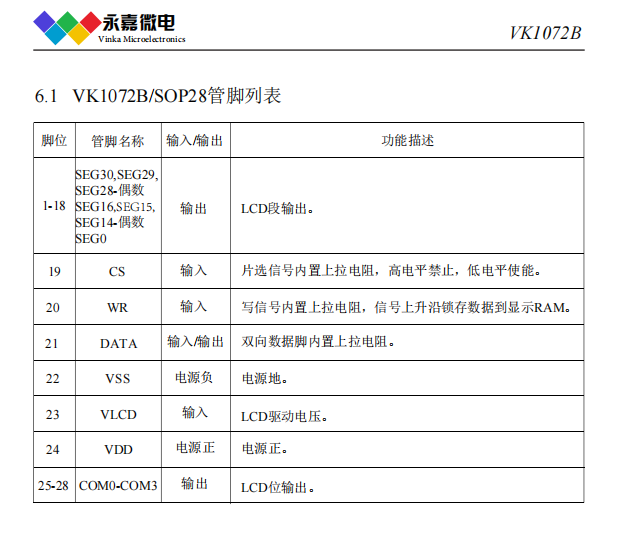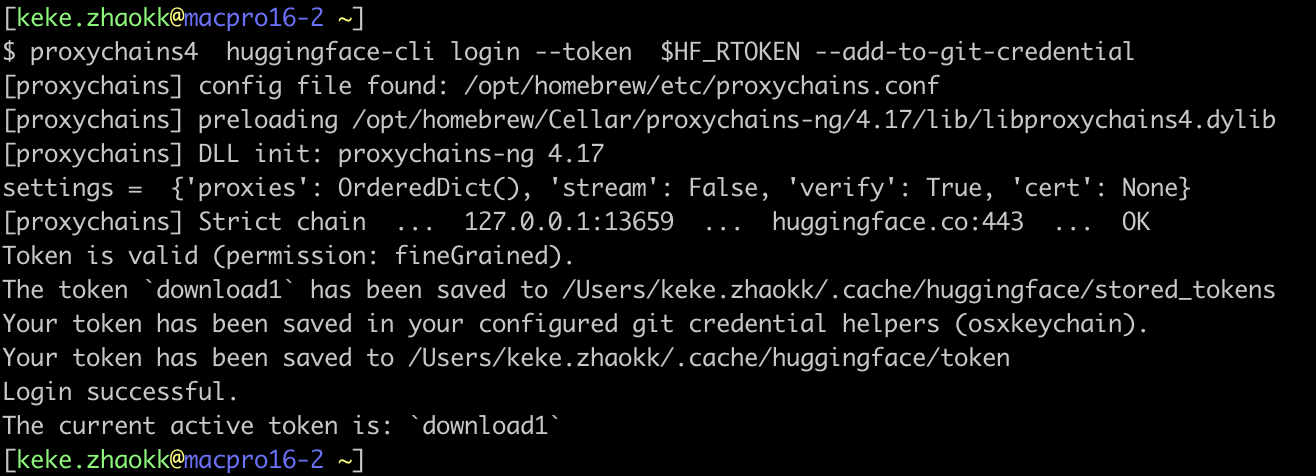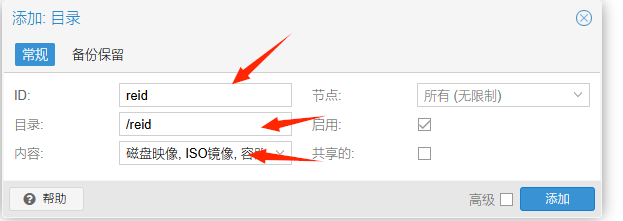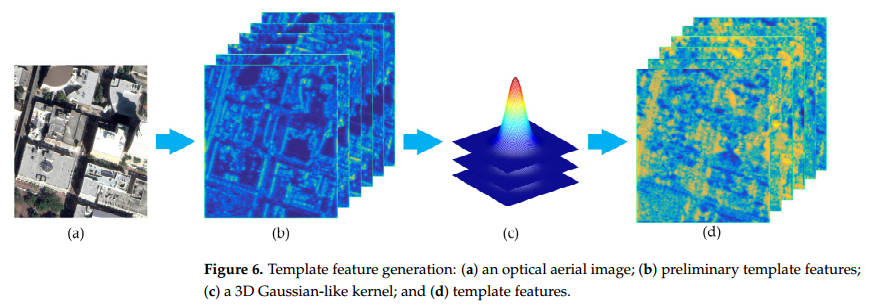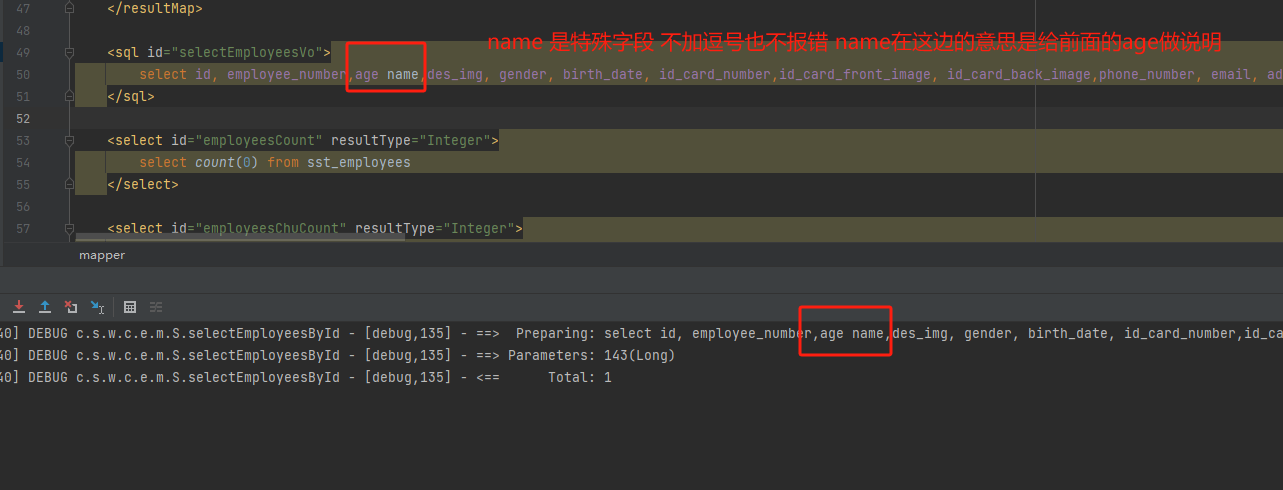一、虚拟机管理操作
1.1 虚拟机状态
通过 virsh 管理虚拟机,虚拟机的状态显示为以下几种:
runing 是运行状态
idel 是空闲状态
pause 暂停状态
shutdown 关闭状态
crash 虚拟机崩坏状态
daying 垂死状态
shut off 不运行完全关闭
pmsuspended 客户机被关掉电源中中断
1.2 虚拟机的创建、开机、重启、关机
首先看下 create 和 define 创建虚拟机异同:
create 创建虚拟机
[root@192.168.118.14 ~]#virsh list --all
Id Name State
----------------------------------------------------
76 centos running[root@192.168.118.14 ~]#virsh create cirros.xml
Domain cirros created from cirros.xml[root@192.168.118.14 ~]#virsh list --all
Id Name State
----------------------------------------------------
76 centos running
79 cirros runningdefine 创建虚拟机
[root@192.168.118.14 ~]#virsh list --all
Id Name State
----------------------------------------------------
76 centos running[root@192.168.118.14 ~]#virsh define cirros.xml
Domain cirros defined from cirros.xml[root@192.168.118.14 ~]#virsh list --all
Id Name State
----------------------------------------------------
76 centos running
- cirros shut off
create 是通过 xml 格式文件创建虚拟机,创建完毕启动。当关闭虚拟机时,create创建的虚拟机消失。
define 是通过 xml 格式文件创建虚拟机,创建完毕不启动。当关闭虚拟机时,define 在 list 中依然能查看到。
开启、重启、关闭虚拟机
开启:
virsh start domain重启:
virsh reboot domain关闭:
virsh shutdown domain - 正常关闭虚拟机
virsh destroy domain - 直接断电关闭虚拟机
1.3 虚拟机 CPU 的操作
cpu-stats 宿主机和虚拟机cpu 运行时间状态
[root@192.168.118.14 ~]#virsh cpu-stats centos
CPU0:cpu_time 131.344620748 secondsvcpu_time 78.559064700 seconds
CPU1:cpu_time 145.769793063 secondsvcpu_time 81.011781142 seconds
CPU2:cpu_time 132.633396527 secondsvcpu_time 12.782286092 seconds
CPU3:cpu_time 49.708745382 secondsvcpu_time 11.473885669 seconds
Total:cpu_time 459.456555720 secondsuser_time 8.220000000 secondssystem_time 17.180000000 seconds
vcpucount 查看虚拟机 vcpu 的配置数量
[root@192.168.118.14 ~]#virsh vcpucount centos
maximum config 2
maximum live 2
current config 2
current live 2
vcpuinfo 查看 vcpu 详细信息,vcpu0 运行在宿主机的 cpu0 上。
[root@192.168.118.14 ~]#virsh vcpuinfo cirros
VCPU: 0
CPU: 3
State: running
CPU time: 8.1s
CPU Affinity: yyyy
1.3.1 vcpu 亲和性绑定
使用 virsh vcpuinfo 命令查看实例 vcpu 和 物理 cpu 的对应关系
[root@192.168.118.11 ~]#virsh vcpuinfo cirros
VCPU: 0
CPU: 2
State: running
CPU time: 3.5s
CPU Affinity: yyyyVCPU: 1
CPU: 3
State: running
CPU time: 1.0s
CPU Affinity: yyyy
可以发现, vcpu0 绑定到物理 cpu2 上, vcpu1 绑定到物理 cpu3 上。
使用 emulatorpin 命令可以查看虚拟机可以使用哪些物理逻辑 cpu
[root@192.168.118.11 ~]#virsh emulatorpin cirros
emulator: CPU Affinity
----------------------------------*: 0-3
宿主机本身有 4个 cpu。 意味着 cirros 虚拟机可以随意在这 4个cpu上切换。
在线绑定虚拟机 cpu
可以强制将虚拟机绑定到一个 cpu 区间。例如,将虚拟机 cirros 的 vcpu 绑定在 1-3 区间调度。
[root@192.168.118.11 ~]#virsh emulatorpin cirros 1-3
[root@192.168.118.11 ~]#virsh emulatorpin cirros
emulator: CPU Affinity
----------------------------------*: 1-3
这样,就绑定了虚拟机在 1-3 cpu 区间之类切换。
上面是为虚拟机设置一个物理 cpu 区间,如果要一对一绑定就需要使用 vcpupin
[root@192.168.118.11 ~]#virsh vcpuinfo cirros
VCPU: 0
CPU: 3
State: running
CPU time: 3.6s
CPU Affinity: yyyyVCPU: 1
CPU: 2
State: running
CPU time: 1.0s
CPU Affinity: yyyy# 将vcpu0 绑定到 cpu0
[root@192.168.118.11 ~]#virsh vcpupin cirros 0 0
# 将 vcpu1 绑定到 cpu1
[root@192.168.118.11 ~]#virsh vcpupin cirros 1 1
[root@192.168.118.11 ~]#virsh vcpuinfo cirros
VCPU: 0
CPU: 0
State: running
CPU time: 3.6s
CPU Affinity: y---VCPU: 1
CPU: 1
State: running
CPU time: 1.0s
CPU Affinity: -y--
cpu 绑定技术原理:cpu绑定实际上是 Libvirt 通过 cgroup 来实现的,通过cgroup直接去绑定KVM 虚拟机进程。cgroup 不仅可以做 cpu 绑定,还可以限制虚拟机磁盘、网络资源控制。cpu 绑定技术适用的应用场景:系统的 CPU 压力较大多核 cpu 压力不平衡,可以通过 cpu vcpupin 技术人工进行调配。
1.3.2 动态调配 vcpu 个数(可增大不可减少)
在 kvm 中可动态的调整 vcpu 的个数,简单理解就是,设置一个 vcpu 最大值,这个最大值肯定是要大于当前 vcpu 数量的,然后就可以在 当前 vcpu 数量和 设置的最大vcpu数量之间 动态的调整 vcpu 的个数,如下示例演示:
(1)在虚拟机关闭的情况下,调整 vcpu 最大支持的数目
[root@192.168.118.14 ~]#virsh list --all
Id Name State
----------------------------------------------------
76 centos running
- cirros shut off# 查看未虚拟机 cirros 目前主机信息
[root@192.168.118.14 ~]#virsh dominfo cirros
Id: -
Name: cirros
UUID: b7acba73-f70c-4c59-b144-cc20a7665ad4
OS Type: hvm
State: shut off
CPU(s): 1
Max memory: 1048576 KiB
Used memory: 0 KiB
Persistent: yes
Autostart: disable
Managed save: no
Security model: selinux
Security DOI: 0# 关机状态下修改虚拟机 cirros 最大支持的 vcpu 个数
[root@192.168.118.14 ~]#virsh setvcpus cirros --maximum 4 --config
(2)开机状态下动态的调整 vcpu 的数目
# 开启虚拟机
[root@192.168.118.14 ~]#virsh start cirros
Domain cirros started# 查看开机 虚拟机 cirros 主机信息
[root@192.168.118.14 ~]#virsh dominfo cirros
Id: 89
Name: cirros
UUID: b7acba73-f70c-4c59-b144-cc20a7665ad4
OS Type: hvm
State: running
CPU(s): 1
CPU time: 8.0s
Max memory: 1048576 KiB
Used memory: 1048576 KiB
Persistent: yes
Autostart: disable
Managed save: no
Security model: selinux
Security DOI: 0
Security label: system_u:system_r:svirt_t:s0:c123,c791 (permissive)# 动态调整 vcpu 为 2
[root@192.168.118.14 ~]#virsh setvcpus cirros 2# 查看调整 vcpu 是否成功
[root@192.168.118.14 ~]#virsh dominfo cirros
Id: 89
Name: cirros
UUID: b7acba73-f70c-4c59-b144-cc20a7665ad4
OS Type: hvm
State: running
CPU(s): 2
CPU time: 20.7s
Max memory: 1048576 KiB
Used memory: 1048576 KiB
Persistent: yes
Autostart: disable
Managed save: no
Security model: selinux
Security DOI: 0
Security label: system_u:system_r:svirt_t:s0:c123,c791 (permissive)
1.4 虚拟机 内存 操作
1.4.1 虚拟机内存限制
memtune 查看或设置内存参数
作用:限制虚拟机在物理机host上申请内存的大小。
[root@192.168.118.14 ~]#virsh memtune centos
hard_limit : unlimited
soft_limit : unlimited
swap_hard_limit: unlimitedhard_limit :设置虚拟机可用物理内存最大值 (单位KB)
soft_limit:设置虚拟机软限制最大上限(单位KB)
swap_hard_limit:设置虚拟机 swap 分区硬上限(单位KB)
设置:
[root@192.168.118.14 ~]#virsh memtune centos --hard-limit 4G --config --live
[root@192.168.118.14 ~]#virsh memtune centos --swap-hard-limit 4G --config --live
[root@192.168.118.14 ~]#virsh memtune centos --soft-limit 2G --config --live
[root@192.168.118.14 ~]#virsh memtune centos
hard_limit : 4194304
soft_limit : 2097152
swap_hard_limit: 4194304<br><br><br>说明:<br>--config 设置永久配置<br>--live 设置当前启动状态配置
1.4.2 动态修改内存大小(可增大可减小)
动态修改内存和动态调配 vcpu 配置差不多,都是通过设置一个最大值,然后就可以设置的内存 大于等于当前内存了。
(1)关机状态下,修改虚拟机的最大内存数
[root@192.168.118.14 ~]#virsh list --all
Id Name State
----------------------------------------------------
90 cirros running
- centos shut off[root@192.168.118.14 ~]#virsh dominfo centos
Id: -
Name: centos
UUID: b149f8c5-f4b4-4d2d-a10d-81b8b13c68eb
OS Type: hvm
State: shut off
CPU(s): 1
Max memory: 1048576 KiB
Used memory: 0 KiB
Persistent: yes
Autostart: disable
Managed save: no
Security model: selinux
Security DOI: 0[root@192.168.118.14 ~]#virsh setmaxmem centos 10G --config
[root@192.168.118.14 ~]#virsh dominfo centos
Id: -
Name: centos
UUID: b149f8c5-f4b4-4d2d-a10d-81b8b13c68eb
OS Type: hvm
State: shut off
CPU(s): 1
Max memory: 10485760 KiB
Used memory: 0 KiB
Persistent: yes
Autostart: disable
Managed save: no
Security model: selinux
Security DOI: 0
(2)开启虚拟机,进行内存大小的调整
调整前,虚拟机内存大小:

[root@192.168.118.14 ~]#virsh setmem centos 2G --config --live
[root@192.168.118.14 ~]#virsh dominfo centos
Id: 93
Name: centos
UUID: b149f8c5-f4b4-4d2d-a10d-81b8b13c68eb
OS Type: hvm
State: running
CPU(s): 1
CPU time: 92.1s
Max memory: 10485760 KiB
Used memory: 2097152 KiB
Persistent: yes
Autostart: disable
Managed save: no
Security model: selinux
Security DOI: 0
Security label: system_u:system_r:svirt_t:s0:c645,c949 (permissive)
调整后,虚拟机内存大小:

内存动态调整完成。
1.5 虚拟机 磁盘 的操作
1.5.1 磁盘的新增和删除
磁盘的新增和删除有两种实现方式:
(1)attach-device 和 detach-device
(2)attach-disk 和 detach-disk
在新增或删除磁盘之前,通过 qemu-img 创建一个虚拟磁盘文件:
[root@192.168.118.14 ~]#qemu-img create -f qcow2 /images/share-device.qcow2 -o size=5G,preallocation=metadata第一种方式:
通过 attach-device 新增磁盘时,需要通过 xml 来添加。
编写 xml 文件,这里有个技巧:通过 virsh edit cirros 编辑 xml 文件,复制关于 disk 的部分进行修改,这样不容易出现报错。[root@192.168.118.14 /images]#cat share-device.xml
<disk type='file' device='disk'><driver name='qemu' type='qcow2' cache='writeback' io='threads'/><source file='/images/share-device.qcow2'/><target dev='vdb' bus='virtio'/>
</disk>
通过 attach-device 将磁盘附加到虚拟机上
[root@192.168.118.14 /images]#virsh attach-device cirros /images/share-device.xml --config --live
Device attached successfully
# 通过 domblklist 可查看虚拟机目前挂载的磁盘信息
[root@192.168.118.14 /images]#virsh domblklist cirros
Target Source
------------------------------------------------
vda /images/cirros-0.3.5-i386-disk.img
vdb /images/share-device.qcow2
查看虚拟机磁盘:

删除添加过的磁盘:
[root@192.168.118.14 /images]#virsh detach-device cirros /images/share-device.xml --config --live
Device detached successfully
# 通过 domblklist 可查看虚拟机目前挂载的磁盘信息
[root@192.168.118.14 /images]#virsh domblklist cirros
Target Source
------------------------------------------------
vda /images/cirros-0.3.5-i386-disk.img
查看虚拟机磁盘:

删除成功。
注意:使用 attach-device 和 detach-device 时,文件的指向是 xml 文件,而不是虚拟磁盘文件。
第二种方式:
通过 attach-disk 新增磁盘时,需要通过 虚拟磁盘文件 来添加。
添加虚拟磁盘:
[root@192.168.118.14 /images]#virsh attach-disk cirros /images/share-device.qcow2 vdb --live --config
Disk attached successfully
删除虚拟磁盘:
[root@192.168.118.14 /images]#virsh detach-disk cirros /images/share-device.qcow2 --live --config
Disk detached successfully
1.6 虚拟机 网卡 的操作
主要操作命令:
domiflist : 查看虚拟机中所有的网卡设备
attach-interface: 为虚拟机添加网卡设备
detach-interface:删除虚拟机网卡设备
示例演示:
(1)查看虚拟机所有网络设备:
[root@192.168.118.14 /images]#virsh domiflist cirros
Interface Type Source Model MAC
-------------------------------------------------------
vnet0 network default rtl8139 52:54:00:c6:aa:b7
(2)为虚拟机再添加一张网卡:
[root@192.168.118.14 /images]#virsh attach-interface cirros --type bridge --source virbr0 --live --config
Interface attached successfully[root@192.168.118.14 /images]#virsh domiflist cirros
Interface Type Source Model MAC
-------------------------------------------------------
vnet0 network default rtl8139 52:54:00:c6:aa:b7
vnet1 bridge virbr0 rtl8139 52:54:00:de:6d:04
网卡添加成功。
(3)删除网络设备:
[root@192.168.118.14 ~]#virsh detach-interface cirros --type bridge --mac 52:54:00:e0:2c:44 --live --config
Interface detached successfully[root@192.168.118.14 ~]#virsh domiflist cirros
Interface Type Source Model MAC
-------------------------------------------------------
vnet0 network default rtl8139 52:54:00:c6:aa:b7
1.7 虚拟机 其他 的一些操作
1.7.1 autostart
autostart :设置物理机开机启动虚拟机
查看方式:
[root@192.168.118.14 ~]#virsh dominfo cirros
Id: 96
Name: cirros
UUID: 3748ef4e-1c84-4f28-9a4b-53ad22310bfd
OS Type: hvm
State: running
CPU(s): 1
CPU time: 25.1s
Max memory: 1048576 KiB
Used memory: 1048576 KiB
Persistent: yes
Autostart: disable
Managed save: no
Security model: selinux
Security DOI: 0
Security label: system_u:system_r:svirt_t:s0:c184,c860 (permissive)
其中 autostart 选项就是是否开机启动。disable 否,enable 是
设置:
[root@192.168.118.14 ~]#virsh autostart cirros # 设置开机启动
[root@192.168.118.14 ~]#virsh autostart cirros --disable # 关闭开机启动
1.7.2 domdisplay
显示虚拟机连接的 URI
[root@192.168.118.14 ~]#virsh domdisplay centos
vnc://127.0.0.1:0
1.7.3 dumpxml
导出虚拟机的 xml 文件
[root@192.168.118.14 ~]#virsh dumpxml centos > centos.xml
二、虚拟机 监控 操作
domblkerror:查看虚拟机磁盘块错误信息
[root@192.168.118.14 ~]#virsh domblkerror centos
No errors found
domblklist:查看虚拟机磁盘信息及位置
[root@192.168.118.14 ~]#virsh domblklist centos
Target Source
------------------------------------------------
vda /images/CentOS-7-x86_64-GenericCloud-1511.qcow2
domblkstat:查看磁盘 I/O 等信息
[root@192.168.118.14 ~]#virsh domblkstat centosrd_req 5476rd_bytes 119216128wr_req 2271wr_bytes 3498496flush_operations 50rd_total_times 1649970675wr_total_times 2319258979flush_total_times 627588120
domcontrol:查看虚拟机接口信息
[root@192.168.118.14 ~]#virsh domcontrol centos
ok
domif-getlink:查看虚拟机某一个虚拟接口的状态
[root@192.168.118.14 ~]#virsh domif-getlink centos vnet0
vnet0 up
domifaddr:查看虚拟机网卡信息
[root@192.168.118.14 ~]#virsh domifaddr centosName MAC address Protocol Address
-------------------------------------------------------------------------------vnet0 52:54:00:cb:f1:75 ipv4 192.168.122.40/24
domiflist:查看网卡详细信息
[root@192.168.118.14 ~]#virsh domiflist centos
Interface Type Source Model MAC
-------------------------------------------------------
vnet0 network default rtl8139 52:54:00:cb:f1:75
domifstat:查看虚拟机网卡流量详细信息
[root@192.168.118.14 ~]#virsh domifstat centos vnet0
vnet0 rx_bytes 49615
vnet0 rx_packets 789
vnet0 rx_errs 0
vnet0 rx_drop 0
vnet0 tx_bytes 19422
vnet0 tx_packets 239
vnet0 tx_errs 0
vnet0 tx_drop 0
dominfo:查看虚拟机的详细信息
[root@192.168.118.14 ~]#virsh dominfo centos
Id: 98
Name: centos
UUID: 35abdeb1-ef6d-41b4-9c4c-61e3a660c666
OS Type: hvm
State: running
CPU(s): 1
CPU time: 114.0s
Max memory: 1048576 KiB
Used memory: 1048576 KiB
Persistent: yes
Autostart: disable
Managed save: no
Security model: selinux
Security DOI: 0
Security label: system_u:system_r:svirt_t:s0:c555,c926 (permissive)
dommemstat:查看内存状态
[root@192.168.118.14 ~]#virsh dommemstat centos
actual 1048576
swap_in 3733319892074496
rss 404032
domstate:查看虚拟机状态
[root@192.168.118.14 ~]#virsh domstate centos
running
domstats:查看虚拟机状态参数
[root@192.168.118.14 ~]#virsh domstats centos
Domain: 'centos'state.state=1state.reason=1cpu.time=118798719298cpu.user=7620000000cpu.system=11920000000balloon.current=1048576…三、宿主机及 Hypervisor 信息
主要常用的几个选项:
hostname:查看宿主机名
[root@192.168.118.14 ~]#virsh hostname
kvm-test
maxvcpus:查看宿主机 vcpu 使用的最大值
[root@192.168.118.14 ~]#virsh maxvcpus
16
nodeinfo:查看宿主机信息
[root@192.168.118.14 ~]#virsh nodeinfo
CPU model: x86_64
CPU(s): 4
CPU frequency: 2397 MHz
CPU socket(s): 4
Core(s) per socket: 1
Thread(s) per core: 1
NUMA cell(s): 1
Memory size: 8010940 KiB
sysinfo:查看宿主机系统参数信息
[root@192.168.118.14 ~]#virsh sysinfo
<sysinfo type='smbios'><bios><entry name='vendor'>Seabios</entry><entry name='version'>0.5.1</entry><entry name='date'>01/01/2011</entry><entry name='release'>1.0</entry></bios>
... ...
uri:查看连接宿主机的 uri
[root@192.168.118.14 ~]#virsh uri
qemu:///system
version:查看宿主机安装libvirt QEMU 的版本信息
[root@192.168.118.14 ~]#virsh version
Compiled against library: libvirt 1.2.17
Using library: libvirt 1.2.17
Using API: QEMU 1.2.17
Running hypervisor: QEMU 1.5.3
四、interface 相关的选项*
4.1 iface-bridge 和 iface-unbridge
iface-bridge 创建网桥
iface-unbridge 删除网桥
注意:在使用 iface-bridge 创建网桥之前,请将 NetworkManager 服务关闭,否则会造成创建完网桥之后,网络断开的情况。
# 查看网桥设备
[root@localhost ~]# brctl show
bridge name bridge id STP enabled interfaces# 关闭 NetworkManager 服务
[root@localhost ~]# systemctl stop NetworkManager ; systemctl disable NetworkManager
Removed symlink /etc/systemd/system/multi-user.target.wants/NetworkManager.service.
Removed symlink /etc/systemd/system/dbus-org.freedesktop.NetworkManager.service.
Removed symlink /etc/systemd/system/dbus-org.freedesktop.nm-dispatcher.service.
# 创建网桥
[root@localhost ~]# virsh iface-bridge eno16777736 br0
Created bridge br0 with attached device eno16777736
Bridge interface br0 started# 查看创建的网桥信息
[root@localhost ~]# brctl show
bridge name bridge id STP enabled interfaces
br0 8000.000c293178be yes eno16777736[root@localhost ~]# ifconfig
br0: flags=4163<UP,BROADCAST,RUNNING,MULTICAST> mtu 1500inet 192.168.118.11 netmask 255.255.255.0 broadcast 192.168.118.255inet6 fe80::20c:29ff:fe31:78be prefixlen 64 scopeid 0x20<link>ether 00:0c:29:31:78:be txqueuelen 0 (Ethernet)RX packets 121 bytes 16478 (16.0 KiB)RX errors 0 dropped 0 overruns 0 frame 0TX packets 66 bytes 7360 (7.1 KiB)TX errors 0 dropped 0 overruns 0 carrier 0 collisions 0eno16777736: flags=4163<UP,BROADCAST,RUNNING,MULTICAST> mtu 1500ether 00:0c:29:31:78:be txqueuelen 1000 (Ethernet)RX packets 2533 bytes 573618 (560.1 KiB)RX errors 0 dropped 0 overruns 0 frame 0TX packets 1673 bytes 643967 (628.8 KiB)TX errors 0 dropped 0 overruns 0 carrier 0 collisions 0lo: flags=73<UP,LOOPBACK,RUNNING> mtu 65536inet 127.0.0.1 netmask 255.0.0.0inet6 ::1 prefixlen 128 scopeid 0x10<host>loop txqueuelen 0 (Local Loopback)RX packets 0 bytes 0 (0.0 B)RX errors 0 dropped 0 overruns 0 frame 0TX packets 0 bytes 0 (0.0 B)TX errors 0 dropped 0 overruns 0 carrier 0 collisions 0
通过上面可以看到,物理网卡 eno16777736 的ip地址已经在 br0上生效了,而 物理网卡已经作为一个桥接设备。
[root@localhost ~]# cd /etc/sysconfig/network-scripts/
[root@localhost network-scripts]# ls ifcfg-*
ifcfg-br0 ifcfg-eno16777736 ifcfg-lo
查看配置文件,iface-bridge 是直接将配置文件也改写了,也就是说,通过 iface-bridge 创建的桥接,重启依然生效。
iface-unbridge 删除网桥的使用:
[root@localhost ~]# virsh iface-unbridge br0
Device eno16777736 un-attached from bridge br0
Interface eno16777736 started[root@localhost ~]# brctl show
bridge name bridge id STP enabled interfaces
[root@localhost ~]# virsh iface-list --allName State MAC Address
---------------------------------------------------eno16777736 active 00:0c:29:31:78:belo active 00:00:00:00:00:00
网桥 br0 删除成功。
4.2 iface-list 查看宿主机所有的 interface接口
[root@localhost ~]# virsh iface-list --allName State MAC Address
---------------------------------------------------br0 active 00:0c:29:31:78:belo active 00:00:00:00:00:00
4.3 iface-edit 编辑宿主机现有的 interface
[root@localhost ~]# virsh iface-edit br0<interface type='bridge' name='br0'><start mode='onboot'/><protocol family='ipv4'><ip address='192.168.118.11' prefix='24'/><route gateway='192.168.118.1'/></protocol><bridge stp='on' delay='0'><interface type='ethernet' name='eno16777736'></interface></bridge>
</interface>
4.4 iface-dumpxml 导出宿主机现有的 interface 为 xml 文件
# 查看
[root@localhost ~]# virsh iface-dumpxml br0
<interface type='bridge' name='br0'><protocol family='ipv4'><ip address='192.168.118.11' prefix='24'/></protocol><protocol family='ipv6'><ip address='fe80::20c:29ff:fe31:78be' prefix='64'/></protocol><bridge><interface type='ethernet' name='vnet0'><link state='unknown'/><mac address='fe:54:00:9c:b2:32'/></interface><interface type='ethernet' name='eno16777736'><link speed='1000' state='up'/><mac address='00:0c:29:31:78:be'/></interface></bridge>
</interface># 导入到 xml 文件
[root@localhost ~]# virsh iface-dumpxml br0 > br0.xml
4.5 iface-destroy 和 iface-start
iface-destroy 将 interface 设置为 不活动状态
iface-start 将 interface 设置为 活动状态
[root@localhost ~]# virsh iface-list --allName State MAC Address
---------------------------------------------------br0 active 00:0c:29:53:fa:87lo active 00:00:00:00:00:00[root@localhost ~]# virsh iface-destroy lo
Interface lo destroyed[root@localhost ~]# virsh iface-list --allName State MAC Address
---------------------------------------------------br0 active 00:0c:29:53:fa:87lo inactive 00:00:00:00:00:00
iface-destroy 不可轻易使用,会造成虚拟机或宿主机网络失联。
iface-start 的使用:
[root@localhost ~]# virsh iface-start lo
Interface lo started[root@localhost ~]# virsh iface-list --allName State MAC Address
---------------------------------------------------br0 active 00:0c:29:31:78:belo active 00:00:00:00:00:00
4.6 iface-mac 获取 接口的 mac 地址
[root@localhost ~]# virsh iface-mac lo
00:00:00:00:00:00[root@localhost ~]# virsh iface-mac br0
00:0c:29:53:fa:87
4.7 iface-name 通过 mac 地址获取 接口名称
[root@localhost ~]# virsh iface-name 00:0c:29:53:fa:87
br0[root@localhost ~]# virsh iface-name 00:00:00:00:00:00
lo五、网络相关的选项
注意: virsh network 选项内容管理对应的文件是 /etc/libvirt/qemu/network/ 如果这里没有关于网络的xml 文件,则通过 virsh net-list -all 是查询不到网络的。
对于上面实例通过 virsh iface-bridge eno16777736 br0 这样创建的网桥,通过 virsh net-list 是查询不到的。
当使用 yum install libvirt 安装不做任何修改进行启动,通过 virsh net-list 查看:
[root@localhost ~]# virsh net-listName State Autostart Persistent
----------------------------------------------------------default active yes yes
这里的 default 对应的文件是 /etc/libvirt/qemu/networks/default.xml
network选项中,重点掌握一下:
net-destroy 停止网络
net-start 启用网络
net-dumpxml 查看网络配置文件 同等于 cat /etc/libvirt/qemu/networks/default.xml
net-edit 编辑网络配置文件 同等于 vim /etc/libvirt/qemu/networks/default.xml
net-create 通过 xml 文件创建网络,一般很少使用。
net-info 查看网络详细信息
net-autostart 宿主机开启自动启动
六、快照相关的选项
重点掌握如下选项:
snapshot-list 查看某domain的快照
snapshot-info 查看快照详细信息
snapshot-dumpxml 查看快照xml文件
snapshot-edit 编辑快照信息
snapshot-create 创建一个 xml 格式的快照
snapshot-create-as 创建一个 xml 格式的快照,但是可以命名快照名
snapshot-revert 将虚拟机还原到快照信息6.1 snapshot-create 和 snapshot-create-as
这两个命令创建快照其内部运行机制是一致的,只不过 snapshot-create-as 可以为快照命名,如下:
[root@localhost ~]# virsh listId Name State
----------------------------------------------------2 cirros running[root@localhost ~]# virsh snapshot-create cirros
Domain snapshot 1563634518 created
[root@localhost ~]# virsh snapshot-list cirrosName Creation Time State
------------------------------------------------------------1563634518 2019-07-20 22:55:18 +0800 running[root@localhost ~]# virsh snapshot-create-as cirros cirros_bak
Domain snapshot cirros_bak created
[root@localhost ~]# virsh snapshot-list cirrosName Creation Time State
------------------------------------------------------------1563634518 2019-07-20 22:55:18 +0800 runningcirros_bak 2019-07-20 22:55:45 +0800 running
可以发现,通过 snapshot-create 创建的快照 Name 为时间戳,而通过 snapshot-create-as 创建的快照则可以自行命名。
6.2 snapshot-revert 还原快照
[root@localhost ~]# virsh snapshot-list cirrosName Creation Time State
------------------------------------------------------------1563634518 2019-07-20 22:55:18 +0800 runningcirros_bak 2019-07-20 22:55:45 +0800 running[root@localhost ~]# virsh snapshot-revert cirros cirros_bak[root@localhost ~]# virsh listId Name State
----------------------------------------------------2 cirros running七、虚拟机存储池操作
kvm 平台以存储池的形式对存储进行统一管理,所谓存储池可以理解为本地目录,通过远端磁盘阵列(ISCSI、NFS)分配过来磁盘或目录,当然也支持各类分布式文件系统。
为虚拟机创建存储池的两种方式:
7.1 通过 xml 文件创建
通过 pool-list --all 查看所有的 存储池, 默认为有一个 default 存储池
[root@192.168.118.14 ~]#virsh pool-list --allName State Autostart
-------------------------------------------default active yes
通过 pool-dumpxml 将 default 存储池导入出来进行修改
[root@192.168.118.14 ~]#virsh pool-dumpxml default > images.xml修改如下:
[root@192.168.118.14 ~]#cat images.xml
<pool type='dir'><name>images</name><source></source><target><path>/images</path><permissions><mode>0711</mode><owner>0</owner><group>0</group></permissions></target>
</pool>
/images 目录必须存在。
通过 pool-define 导出存储池
[root@192.168.118.14 ~]#virsh pool-define images.xml
Pool images defined from images.xml[root@192.168.118.14 ~]#virsh pool-list --allName State Autostart
-------------------------------------------default active yes images inactive no 启用 images 存储池
[root@192.168.118.14 ~]#virsh pool-start images
Pool images started开机启用 images 存储池
[root@192.168.118.14 ~]#virsh pool-autostart images
Pool images marked as autostarted[root@192.168.118.14 ~]#virsh pool-list --allName State Autostart
-------------------------------------------default active yes images active yes
7.2 通过命令创建存储池
[root@192.168.118.14 ~]#mkdir /img
[root@192.168.118.14 ~]#virsh pool-define-as img --type dir --target /img/
[root@192.168.118.14 ~]#virsh pool-build img
[root@192.168.118.14 ~]#virsh pool-start img
[root@192.168.118.14 ~]#virsh pool-autostart img
7.3 删除存储池
[root@192.168.118.14 ~]#virsh pool-list --allName State Autostart
-------------------------------------------default active yes images active yes [root@192.168.118.14 ~]#virsh pool-destroy images
Pool images destroyed[root@192.168.118.14 ~]#virsh pool-undefine images
Pool images has been undefined[root@192.168.118.14 ~]#virsh pool-list --allName State Autostart
-------------------------------------------default active yes
转载至


